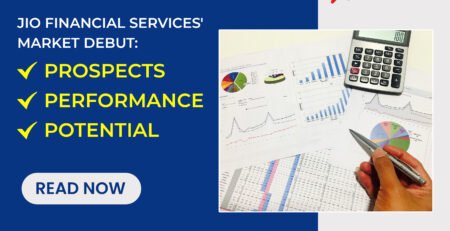Market Volatility: The Hidden Opportunity That Rewards Patient Long-Term Investors in India’s Growth Story
The financial markets have always been a theater of human emotions, where fear and greed dance in perpetual motion, creating waves of volatility that can either paralyze traders or reward patient investors. As global political dynamics shift and economic policies evolve, market volatility has become an increasingly prominent feature of modern investing. However, beneath the surface of this apparent chaos lies a fundamental truth that separates successful long-term investors from short-term speculators: volatility, while unsettling in the moment, consistently rewards those who maintain a long-term perspective and stay invested in quality assets.
Understanding Market Volatility in the Current Global Context
Market volatility refers to the degree of variation in trading prices over time, typically measured by the standard deviation of returns. In today’s interconnected global economy, volatility stems from multiple sources: geopolitical tensions, policy uncertainties, economic data releases, and sudden shifts in investor sentiment. The recent resurgence of protectionist policies, including tariff implementations and trade negotiations, has added another layer of complexity to market dynamics.
When political leaders implement dramatic policy changes, markets respond with increased volatility as investors attempt to price in new realities. Tariffs, trade wars, and diplomatic tensions create uncertainty about future economic conditions, leading to rapid price movements as market participants adjust their expectations. This uncertainty manifests as increased volatility across asset classes, from equities to currencies to commodities.
The psychological impact of such policy announcements cannot be understated. Markets often react more strongly to the perception of change than to the actual economic impact, creating opportunities for discerning investors who can separate noise from fundamental value. This phenomenon is particularly pronounced in emerging markets like India, where foreign investment flows can be significantly influenced by global risk sentiment.
Why Volatility Scares Traders But Rewards Long-Term Investors
The fundamental difference between traders and long-term investors lies in their relationship with time and volatility. Traders, focused on short-term price movements, view volatility as both an opportunity and a threat. They must constantly monitor positions, make quick decisions, and manage the psychological stress of daily price swings. For traders, volatility represents uncertainty that must be navigated carefully to avoid significant losses.
Long-term investors, however, operate from a fundamentally different paradigm. They understand that volatility is not a bug in the market system but a feature that creates opportunities for wealth creation. Here’s why market volatility consistently rewards long-term investors:
Time Arbitrage Advantage
Long-term investors possess what can be called a “time arbitrage” advantage. While short-term market participants must react quickly to price movements, long-term investors can afford to wait for fundamentals to play out. This patience allows them to benefit from the market’s tendency to overreact to short-term news while eventually converging toward intrinsic value.
Dollar-Cost Averaging Benefits
Volatile markets create ideal conditions for dollar-cost averaging strategies. When investors consistently invest fixed amounts regardless of market conditions, they automatically buy more shares when prices are low and fewer when prices are high. This mathematical advantage compounds over time, resulting in better average purchase prices and enhanced returns.
Compound Growth Acceleration
Volatility often creates temporary disconnects between market prices and intrinsic business values. Long-term investors who continue investing during volatile periods often acquire quality assets at discounted prices, accelerating the compounding process. The combination of lower purchase prices and continued business growth creates a powerful wealth-building dynamic.
Emotional Discipline Premium
Perhaps most importantly, long-term investors who maintain discipline during volatile periods earn what can be termed an “emotional discipline premium.” While others panic-sell at market bottoms or euphoric-buy at market tops, disciplined long-term investors continue following their systematic investment approach, capturing the full benefits of market cycles.
India’s Long-Term Growth Story Remains Intact
Despite short-term market fluctuations driven by global uncertainties, India’s fundamental growth story remains compelling and intact. The nation’s economic trajectory is supported by multiple structural advantages that transcend temporary market volatility:
Demographic Dividend
India’s demographic profile represents one of its greatest long-term advantages. With a median age of approximately 28 years, India has a young, growing workforce that will drive consumption and economic growth for decades. This demographic dividend creates sustained demand for goods and services, supporting corporate earnings growth across sectors.
The urbanization trend further amplifies this demographic advantage. As millions migrate from rural to urban areas seeking better opportunities, they typically experience income growth and lifestyle upgrades, driving demand for housing, consumer goods, financial services, and infrastructure. This structural shift creates long-term investment opportunities across multiple sectors.
Digital Transformation and Technology Adoption
India’s digital revolution continues accelerating, creating new markets and transforming traditional industries. The rapid adoption of digital payments, e-commerce, and digital services has created a foundation for sustained economic growth. This technological leap-frogging allows Indian companies to serve markets more efficiently and access previously underserved segments.
The government’s Digital India initiative, combined with increasing smartphone penetration and internet connectivity, creates a virtuous cycle of digital adoption. Companies that successfully leverage these trends can achieve rapid scaling and market expansion, potentially delivering exceptional returns to long-term investors.
Infrastructure Development and Government Initiatives
Massive infrastructure investments under various government initiatives create both direct and indirect investment opportunities. Transportation networks, energy infrastructure, and urban development projects not only provide immediate investment opportunities but also enhance overall economic productivity, supporting broader market growth.
The Production Linked Incentive (PLI) schemes across various sectors aim to boost manufacturing capabilities and reduce import dependence. These initiatives create long-term competitive advantages for Indian companies while attracting foreign investment and technology transfer.
Financial Market Depth and Accessibility
India’s financial markets have matured significantly, offering better liquidity, transparency, and accessibility to both domestic and international investors. The growth of mutual funds, pension funds, and other institutional investors provides stability and reduces market volatility over time. Additionally, regulatory improvements and corporate governance standards have enhanced investor confidence.
Navigating Volatile Markets: Strategies for Long-Term Success
Successfully investing during volatile periods requires specific strategies and mindset adjustments. Here are proven approaches that help long-term investors thrive amid market uncertainty:
Asset Allocation and Diversification
Proper asset allocation across different asset classes, sectors, and geographies helps reduce portfolio volatility while maintaining growth potential. Diversification doesn’t eliminate volatility but ensures that temporary setbacks in one area don’t devastate the entire portfolio. For Indian investors, this might include domestic equities, international exposure, fixed income, and alternative investments.
The key is maintaining strategic asset allocation while allowing for tactical adjustments based on market conditions and valuations. During volatile periods, rebalancing portfolios back to target allocations often involves buying assets that have declined and selling those that have appreciated, effectively implementing a systematic contrarian approach.
Quality Over Momentum
Volatile markets separate quality companies from speculative investments. Companies with strong balance sheets, consistent earnings growth, competitive advantages, and capable management teams typically weather volatility better and emerge stronger. While momentum strategies might work in stable, rising markets, quality-focused approaches prove more resilient during uncertain times.
Quality companies often use volatile periods to gain market share, acquire competitors at attractive prices, or invest in growth initiatives while competitors struggle. This dynamic accelerates the widening gap between quality and mediocre companies, benefiting long-term investors who focus on business fundamentals.
Systematic Investment Approach
Implementing systematic investment approaches, such as systematic investment plans (SIPs) or regular investment schedules, removes emotional decision-making from the investment process. These approaches ensure continued investment during volatile periods when emotions might otherwise lead to poor timing decisions.
Systematic approaches also help investors take advantage of rupee-cost averaging benefits, particularly important in volatile markets where timing individual investments becomes extremely difficult. The mathematical benefits of consistent investing compound over time, often resulting in superior returns compared to attempts at market timing.
Maintaining Adequate Liquidity
While staying invested is crucial for long-term success, maintaining adequate liquidity provides peace of mind and flexibility during volatile periods. Having emergency funds and some liquid investments ensures that temporary financial needs don’t force premature liquidation of long-term investments at unfavorable prices.
Adequate liquidity also provides the flexibility to take advantage of exceptional opportunities that volatile markets occasionally present. When high-quality investments become available at significant discounts, having accessible funds allows investors to increase their positions.
The Psychology of Volatility: Behavioral Challenges and Solutions
Understanding the psychological aspects of volatility is crucial for long-term investment success. Market volatility triggers various behavioral biases that can derail even well-intentioned investment plans:
Loss Aversion and Prospect Theory
Humans naturally feel losses more acutely than equivalent gains, a phenomenon known as loss aversion. During volatile periods, this bias causes investors to focus disproportionately on short-term losses while overlooking long-term opportunities. Understanding this bias helps investors maintain perspective during market downturns.
Recency Bias and Pattern Recognition
Investors tend to extrapolate recent market performance into the future, leading to poor timing decisions. After experiencing volatility, many investors expect continued turbulence and delay investment decisions. Conversely, during calm periods, they might assume stability will continue indefinitely.
Information Overload and Analysis Paralysis
Modern investors face unprecedented information flow, much of it focused on short-term market movements. This constant stream of news, analysis, and opinion can create analysis paralysis or lead to over-trading. Long-term investors benefit from filtering information and focusing on factors that truly matter for long-term outcomes.
Social Proof and Herding Behavior
During volatile periods, investors often look to others for validation of their decisions, leading to herding behavior. When markets decline and media coverage becomes negative, social pressure to sell can be overwhelming. Successful long-term investors develop independent thinking and decision-making processes that resist these pressures.
Sector-Specific Opportunities in India’s Volatile Market Environment
Different sectors respond differently to volatility, creating specific opportunities for long-term investors:
Banking and Financial Services
India’s financial sector stands to benefit from the country’s economic growth and financial inclusion initiatives. While banking stocks can be volatile due to regulatory changes and economic cycles, the long-term trend toward greater financial penetration creates substantial opportunities. Digital banking, insurance penetration, and capital market growth provide multiple investment themes within this sector.
Consumer Discretionary and Staples
India’s growing middle class and changing consumption patterns create opportunities in both consumer staples and discretionary sectors. While discretionary spending might fluctuate with economic cycles, the long-term trend toward higher consumption and brand preference creates opportunities for well-positioned companies.
Technology and Digital Services
India’s position as a global technology hub, combined with domestic digital transformation, creates compelling long-term opportunities in technology sectors. While technology stocks can be highly volatile, companies that successfully navigate digital disruption often achieve exceptional growth rates.
Healthcare and Pharmaceuticals
India’s healthcare sector benefits from demographic trends, rising health awareness, and export opportunities. The sector’s defensive characteristics during volatile periods, combined with long-term growth potential, make it attractive for long-term investors.
Infrastructure and Capital Goods
Government infrastructure initiatives and private sector capacity expansion create opportunities in infrastructure and capital goods sectors. While these sectors can be cyclical and volatile, long-term investors can benefit from India’s infrastructure development story.
Risk Management During Volatile Periods
Effective risk management during volatile periods involves multiple approaches:
Position Sizing and Concentration Risk
Avoiding excessive concentration in any single investment or sector helps manage portfolio volatility. While concentration can accelerate returns during favorable periods, it also increases downside risk during volatile markets. Appropriate position sizing ensures that individual investment losses don’t derail overall portfolio performance.
Regular Portfolio Review and Rebalancing
Systematic portfolio reviews help identify when market volatility has created allocation imbalances. Rebalancing portfolios during volatile periods often involves counter-intuitive decisions, such as buying assets that have declined and selling those that have performed well.
Stress Testing and Scenario Planning
Understanding how portfolios might perform under various scenarios helps prepare for volatile periods. Stress testing involves analyzing potential portfolio performance under different market conditions, helping investors maintain appropriate risk levels.
The Role of Professional Management During Volatile Times
For many investors, working with professional fund managers or advisors becomes particularly valuable during volatile periods. Professional managers offer several advantages:
Emotional Detachment
Professional managers can maintain emotional detachment from portfolio performance, making objective decisions based on analysis rather than fear or greed. This emotional discipline often proves invaluable during volatile periods when individual investors might make poor decisions.
Research and Analysis Capabilities
Professional managers have access to research resources and analytical capabilities that individual investors might lack. During volatile periods, this research advantage helps identify opportunities and avoid potential pitfalls.
Experience with Market Cycles
Experienced professional managers have navigated multiple market cycles, providing valuable perspective during volatile periods. This experience helps them maintain long-term focus when others might panic or become overly optimistic.
Conclusion: Embracing Volatility as a Long-Term Investor’s Ally
Market volatility, while psychologically challenging, remains one of the long-term investor’s most powerful allies. The apparent chaos of volatile markets creates opportunities for patient investors to acquire quality assets at attractive prices while others are driven by emotion rather than analysis.
India’s long-term growth story provides a compelling backdrop for long-term investing, despite short-term political and economic uncertainties. The country’s demographic advantages, digital transformation, infrastructure development, and improving corporate governance create multiple avenues for long-term wealth creation.
Successful navigation of volatile markets requires discipline, proper strategy, and emotional control. Investors who maintain their long-term perspective, continue systematic investing approaches, and focus on quality opportunities position themselves to benefit from market volatility rather than become victims of it.
The key insight for long-term investors is that volatility represents opportunity rather than risk when approached with proper strategy and mindset. While traders struggle with the psychological and financial challenges of volatile markets, long-term investors can use these same conditions to accelerate their wealth-building journey.
As global political and economic dynamics continue evolving, market volatility will likely remain a persistent feature of investing. However, for those who understand that market volatility rewards long-term investors, these uncertain times represent not a threat to be feared but an opportunity to be embraced. The combination of India’s structural growth drivers and the wealth-building opportunities created by market volatility provides a compelling case for maintaining a long-term investment approach, regardless of short-term market turbulence.
In the end, successful investing isn’t about avoiding volatility—it’s about understanding how to make volatility work in your favor through patience, discipline, and a long-term perspective focused on fundamental value creation.












